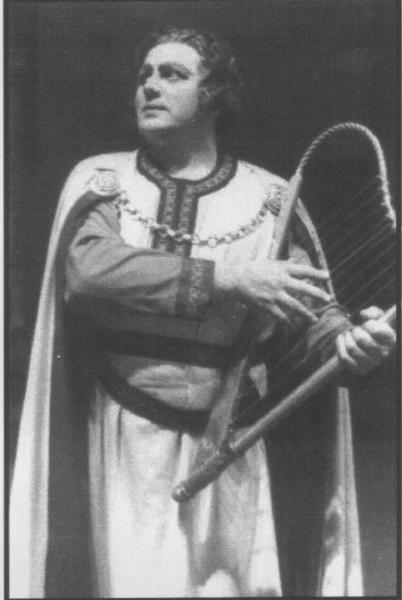Hartmann was a grinder in his hometown (Solingen was and is famous for cutlery production),
and sang in amateur choirs, increasingly also as a soloist. His decision to become a professional singer came late; after
vocal studies with Richard Senff, he made his debut in January 1929 in Barmen-Elberfeld as Tannhäuser,
followed by Lohengrin. He was an immediate sensation.
The following year, he was engaged by to North America by the touring Gadski German Opera Company; he caused another
sensation when one day, after an afternoon performance of Tiefland where he had sung Pedro, he stepped in at last moment's
notice for a sick colleague as Tristan the same evening – he had never sung and not even rehearsed Tristan before.
Now he was really famous. He was one of the mainstays of the Zoppot Wagner festival from 1931 to its closure in 1942. He was
a member of the opera theaters in Cologne, in Munich, and both of the Deutsche Oper and the Staatsoper in Berlin, for a
certain time; but most of his career, he sang internationally as a guest: Munich Wagner festival, Bayreuth (Tristan, 1938),
Metropolitan Opera (1937–40, debut as young Siegfried), Maggio Musicale Fiorentino, Vienna Staatsoper, Paris,
Zürich, Amsterdam, Stockholm,
Barcelona, Chicago, San Francisco, Los Angeles, St. Louis, Tokyo, (Japan's first Lohengrin, December 1940), Milano, Rome.
In 1944, all German theaters were closed because of the war, and that meant the end of Hartmann's career; he didn't resume it
after the war. In his later years, he was completely paralyzed after an accident.
Reference: Einhard Luther: Preiser LP liner notes
